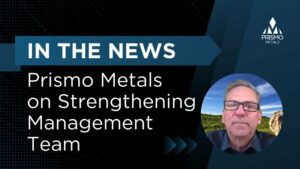We may be headed into a new year, but Chris Thompson, mining analyst with Raymond James, expects more of the same in the precious metals prices: volatility. In this Mining Report interview, he advises investors to play that volatility. He details whydespite its higher royalty taxMexico remains a silver powerhouse, and which companies will feel the royalty pinch most.
The Mining Report: Your research reports make it clear that mine operating costs are creeping up. For investors, which should be the bigger concern, lower commodity prices or climbing operating costs?
Chris Thompson: Both are a concern, but right now operating margins are an investor’s biggest concern. For producers, volatility in the metal prices has led to rapidly changing operating margins. Companies are demonstrating their ability to reduce costs, but how far they need to reduce these costs will be determined by the commodity price.
TMR: Do you have a threshold for operating margins; a minimum that you want to see?
CT: It depends on the metal price forecast, but we’re happiest with a 50%+ operating margin on the company’s total cash cost.
TMR: What are your gold and silver price forecasts for 2014?
CT: We have silver at $25/ounce ($25/oz). Historically, that is not unrealistic, although it is a significant premium to today’s ~$20/oz price. Our gold forecast is $1,400/oz.
TMR: Do you calculate the correlation of equities to the daily spot price?
CT: We calculate correlation coefficients for equity valuations and market valuations relative to metal prices. At the moment, pure play precious metal producers, especially the silvers, correlate very well in many respects with the silver price.
TMR: Some miners publish cost-per-ton numbers; others don’t. How does the average investor calculate cost-per-ton for silver?
CT: That’s a metric I use a lot because from an operating perspective, it’s one of the most relevant metrics in the metals space. It’s a metric with a lot of components, including mining costs, processing costs and general and administrative costsall calculated on a per-ton mill basis. Adding those components together gives you a cost-per-ton milled, which is a pure reflection of mine site operating costs per ton.
TMR: What would be a favorable cost-per-ton in today’s market environment for a silver mine and a gold mine?
CT: You need to recognize that the operating cost on a per-ton basis is only one part of the story. We need to look at the metal value or the metal that’s encased in rock and the company’s capacity to beneficiate that metal.
To answer that question, you have to look at grade, as well as metallurgical recoveries. On a cost-per-ton basis, a mine may be a very high cost producer, but it may also be very profitable based on high grade and good metallurgical recoveries.
TMR: Which three or four silver producers in your coverage universe do you expect to outperform your benchmark index?
CT: Out of the 10 silver producers we cover, four have the potential to outperform their peers: Tahoe Resources Inc. (THO:TSX; TAHO:NYSE), Fortuna Silver Mines Inc. (FSM:NYSE; FVI:TSX; FVI:BVL; F4S:FSE), First Majestic Silver Corp. (FR:TSX; AG:NYSE; FMV:FSE) and Mandalay Resources Corp. (MND:TSX).
TMR: Tahoe’s 2014 guidance predicts production between 1820 million ounces (18-20 Moz). Is that a realistic target?
CT: The underlying preliminary economic assessment calls for a lower production, but in discussions with the company, we understand that there’s potential for better-than-anticipated grade in the near term. That alone underpins the operation’s capacity to deliver 20 Moz silver annually.
TMR: You recently increased your target price on Mandalay. Why?
CT: After seeing the company’s Q3/13 financial results, and more specifically, the performance of its Costerfield mine in Australia, we realized that we were being a little conservative with our 2014 cash-flow projections, so we lightened the cost somewhat at Costerfield. That was the catalyst for the higher target price.
























